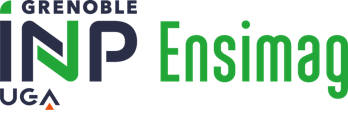Number of hours
- Lectures 18.0
- Projects -
- Tutorials 18.0
- Internship -
- Laboratory works -
- Written tests -
ECTS
ECTS 6.0
Goal(s)
From virtual prototyping in industry to special effects in films, physical simulation has become a powerful tool for capturing, predicting and even understanding the behaviour of complex mechanical phenomena. The design of robust and efficient simulators requires complementary skills in various fields such as mechanics, numerical analysis and algorithms. The aim of this course is to provide students with both the theoretical and practical tools to understand the important concepts in physical simulation. The basics of Lagrangian mechanics and constrained optimisation will be presented and leveraged as fundamental frameworks for the numerical modelling of mechanical systems. This approach will be applied to the simulation of rigid bodies in frictional contact, and will show how an understanding of the geometric and physical properties of the systems makes it possible to obtain stable, robust and high-performance algorithms. The lectures will be supplemented by practical exercises on a computer, giving students the opportunity to build up their own simulator as they go along, using the formalisms and techniques seen in class (rigid body dynamics, anchoring constraints, contact and friction between objects).
Thibaut METIVET, Melina SKOURAS, Florence DESCOUBES
Content(s)
36h course, 1st semester
- Lagrangian mechanics
- Lagrangian mechanics, reminders of numerical integration, dynamics equations, pendulum
- application to the simulation of a double pendulum
- Rigid Bodies
- Lagrangian mechanics on Lie groups
- rotations
- equations of rigid body dynamics, numerical integration
- application to the simulation of the free fall of a rigid body 2D, 3D
- Mechanics with constraints 1
- bilateral (anchoring) constraints in mechanical systems
- optimisation under equality constraints
- application to the kinematic connection of rigid bodies
- Mechanics with constraints 2
- unilateral stresses, non-rubbing contact
- optimisation under unilateral constraints and numerical solution methods
- application to (non-frictional) contact between rigid bodies
- Frictional contact
- Coulomb model for frictional contact, generalised Lagrangian mechanics
- discrete formulation and numerical solution
- application to frictional contact between rigid bodies
- Advanced numerical methods for mechanical problems with contact
- separation methods (Jacobi, Gauss-Seidel)
- alternating approaches (ADMM)
- numerical methods
- differential equations
- optimisation
- linear algebra, matrix calculation and solving linear systems
- basic algorithms and programming (Python and/or C-C++)
Evaluation : Projet (rendu du code et des résultats) + soutenance (~30 min/groupe)
Resit : Examen oral (exposé, soutenance, etc..) (~20 min/pers)
The project to build a simulator, carried out in groups (pairs), will be assessed through a presentation in which the students will demonstrate their modelling approach, their choice of scenario and their results. The mark will take into account both the technical and scientific results obtained and the group's organisational skills in carrying out the project.
The course exists in the following branches:
- Curriculum - Master in Applied Mathematics - Semester 9
Course ID : WMM9AM89
Course language(s): 
You can find this course among all other courses.



